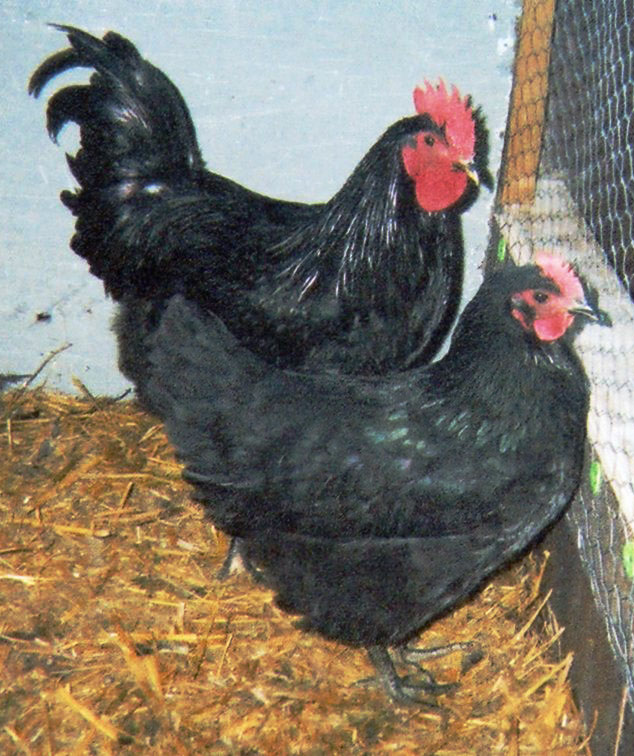
Chicken owners who collect and hatch eggs from their backyard breeder flocks may be divided into two camps: the so-called propagators or multipliers, who emphasize quantity, and the breeders, who emphasize quality.
Both groups hatch lots of chicks. To the propagator, the end goal is the large numbers of chicks. To the breeder, a large number of chicks is merely the means to an end — the more chicks you have, the more heavily you can cull (remove unlikely candidates from your breeder flock); the more heavily you cull, the better the genetic quality of your stock.
Breeding is therefore a long-term investment. The best breeders have been at it for decades.
Breeders look down on propagators because they know that leaving matings to chance gets you nowhere, genetically speaking. Indeed, if you mix chickens of several different breeds and let them mate freely, eventually their descendants will all start to look like the jungle fowl from which all our many chicken breeds were developed.
To strengthen your chosen breed’s desirable traits and maintain their quality, you need a well thought out breeding plan. Your plan should include these six steps:
- Begin with the best birds available.
- Establish a long-range goal.
- Make deliberate matings to meet that goal.
- Keep meticulous breeding records.
- Mark each chick so you can track its parentage.
- Remove from your breeder flock any bird that does not bring you closer to your goal.
Your breeding goal will depend on the quality of the stock you start with, compared with what you want. Select breeding stock based on two traits: individual superiority and good lineage. Avoid breeding a bird with poor ancestry, no matter how great it may look.
Once you decide on a long-range goal, break it down into a series of short-term goals that will help you periodically gauge your success. Set a quality line, and don’t breed any bird that falls below the line.
Each year, raise your quality line a little higher. Concentrate your efforts on improving one trait at a time but not to the exclusion of others. You’ll reach a dead end, for example, if you concentrate solely on improving appearance to the exclusion of reproductive ability.
The Livestock Breeds Conservancy has developed this helpful series on “Chicken Assessment for Improving Productivity”: Selecting for Egg Production, Selecting for Meat Qualities, Ongoing Assessment of Breeding Stock.
The most successful breeders specialize in one breed and one or only a few varieties within that breed. Each breed offers so much to learn about genetics that concentrating your efforts will increase your chance of success. After spending several years mastering one breed or variety, you may feel ready for the challenge of taking on a new breed or an additional variety within your chosen breed.
Breeding chickens requires careful planning and a passionate commitment. But if not for the efforts of dedicated backyard chicken breeders, some of our treasured heritage chicken breeds might be extinct today.
And that’s today’s news from the Cackle Coop.
Gail Damerow, author, Storey’s Guide to Raising Chickens


